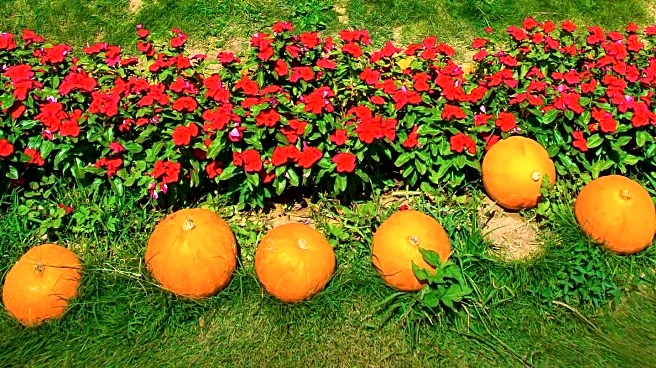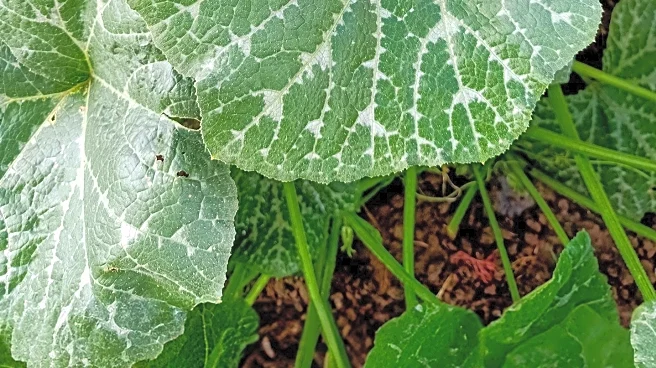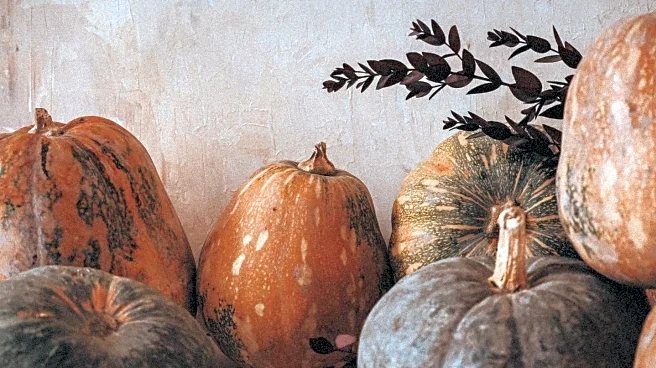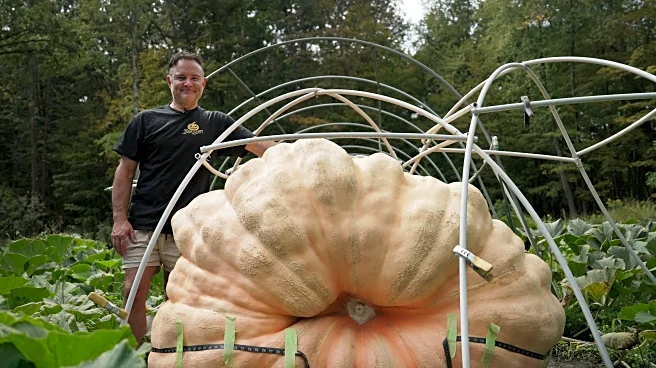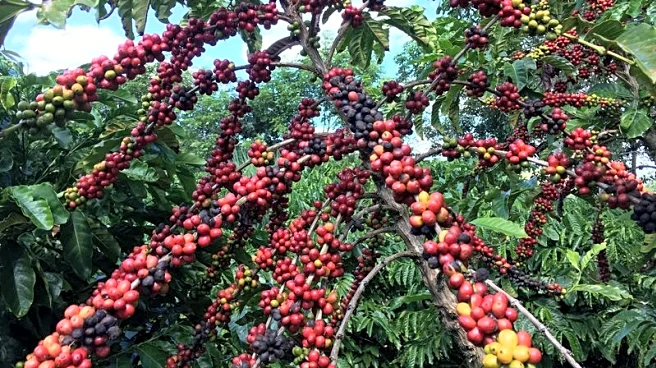What's Happening?
In upstate New York, Tony Scott, a semiconductor engineer, has successfully grown a giant pumpkin weighing 1,931 pounds, securing third place in an annual weigh-off competition. This achievement is part of a broader trend where growers use scientific methods to cultivate massive pumpkins, often exceeding 2,000 pounds. The process involves selecting optimal seeds, such as the Atlantic Giant, and providing the right combination of water, nutrients, and care. Growers like Scott employ techniques such as removing smaller pumpkins to concentrate resources on a single fruit and using tarps to protect the pumpkins from sunlight, which can harden the skin. The pumpkins' robust internal systems allow them to absorb large amounts of water and nutrients, contributing to their enormous size.
Why It's Important?
The cultivation of giant pumpkins is not only a fascinating agricultural feat but also a cultural phenomenon, especially during fall festivals and Halloween events. These pumpkins symbolize the intersection of science and tradition, showcasing how agricultural practices can be enhanced through scientific understanding. The ability to grow such large pumpkins can inspire innovations in other agricultural sectors, potentially leading to more efficient crop production methods. Additionally, these events foster community engagement and tourism, providing economic benefits to local areas. The practice also highlights the importance of plant science and the potential for genetic and environmental factors to influence crop yields.
What's Next?
As the popularity of giant pumpkin growing continues, it is likely that more growers will adopt scientific methods to achieve even larger sizes. This could lead to more competitive weigh-offs and increased interest in agricultural science. Future developments may include the exploration of new seed varieties and growing techniques, potentially leading to record-breaking pumpkins. Additionally, the cultural significance of these pumpkins may expand, with more themed events and displays, further integrating them into seasonal celebrations.
Beyond the Headlines
The practice of growing giant pumpkins raises interesting questions about the limits of plant growth and the role of human intervention in agriculture. It also touches on environmental considerations, such as water usage and the ecological impact of large-scale pumpkin cultivation. As growers push the boundaries of size, there may be discussions about sustainability and the balance between agricultural innovation and environmental stewardship.

